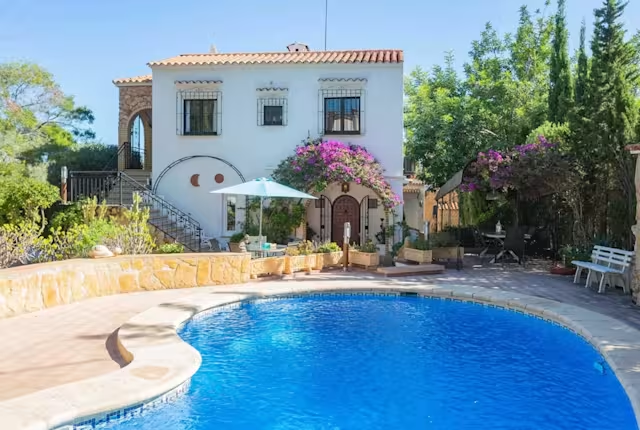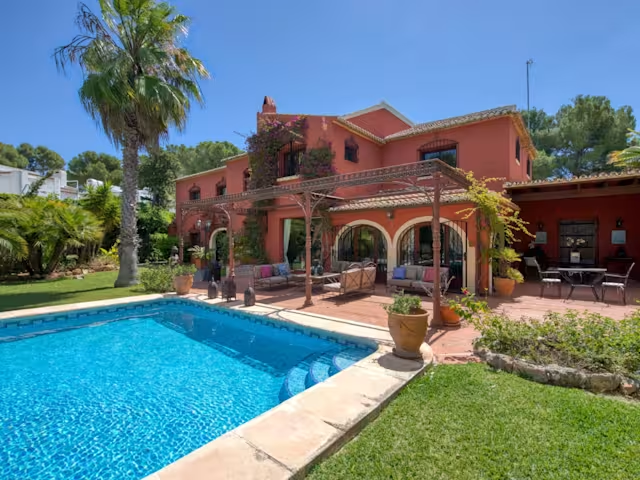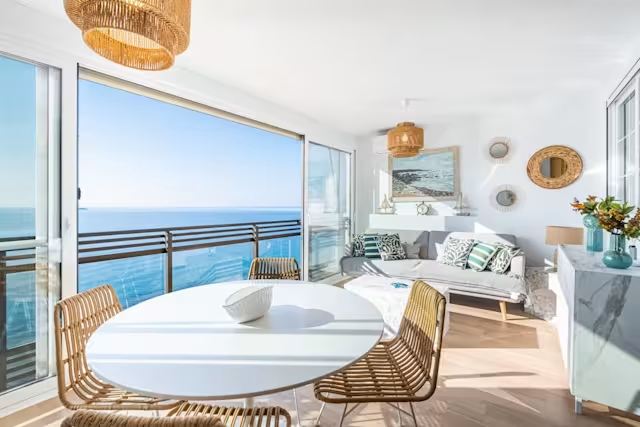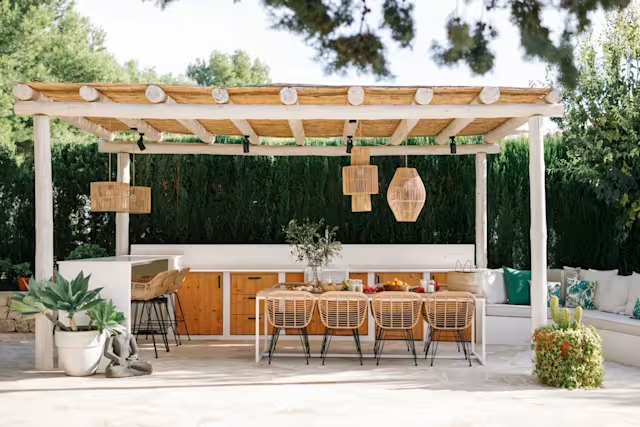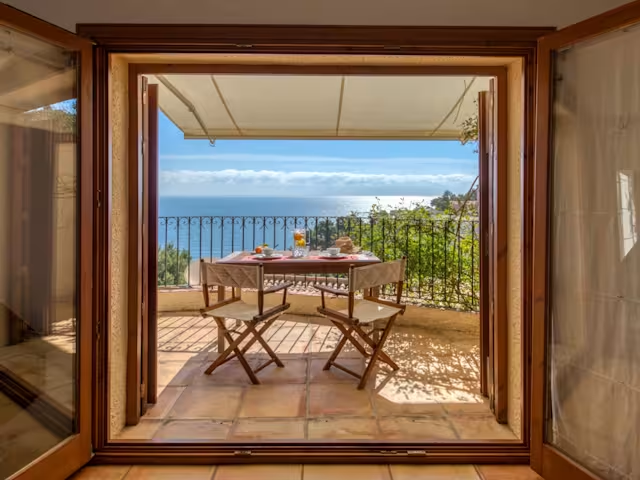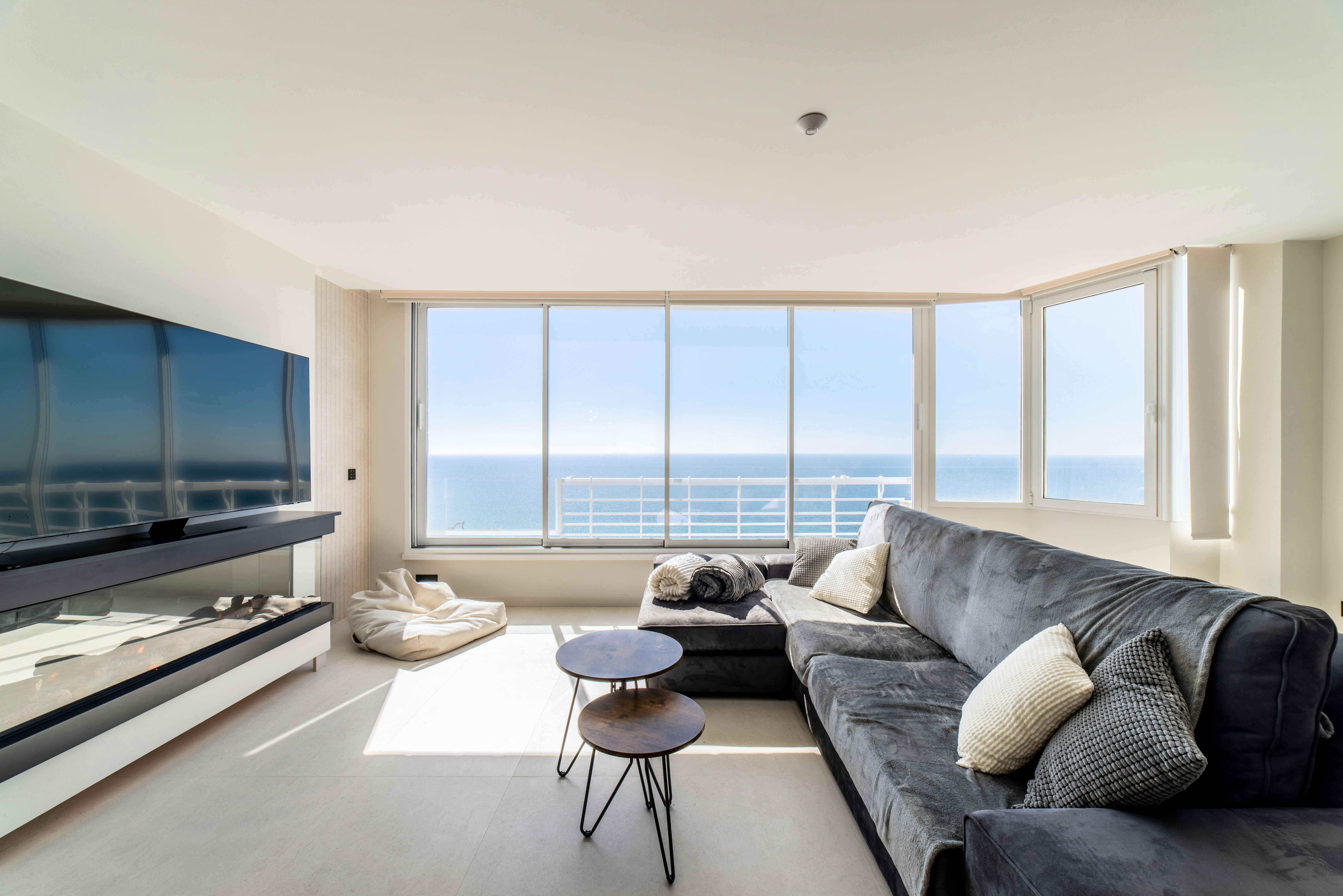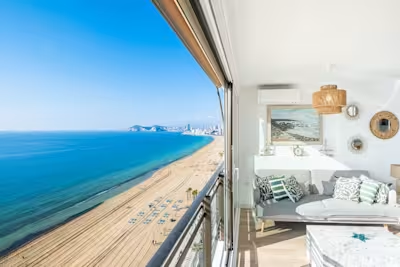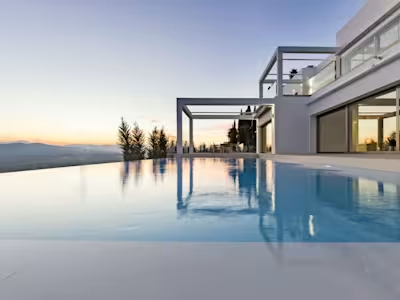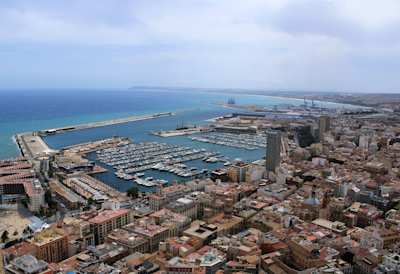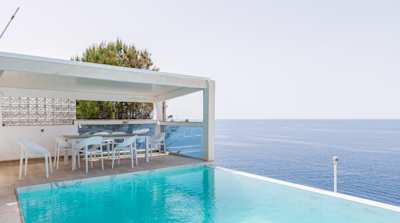Sun, Sea & Sangria: Your Trusty Travel Guide to Alicante
Here’s everything you need to know about travelling to Alicante, from where to find the tastiest local delicacies to hidden gems off the tourist trail
~
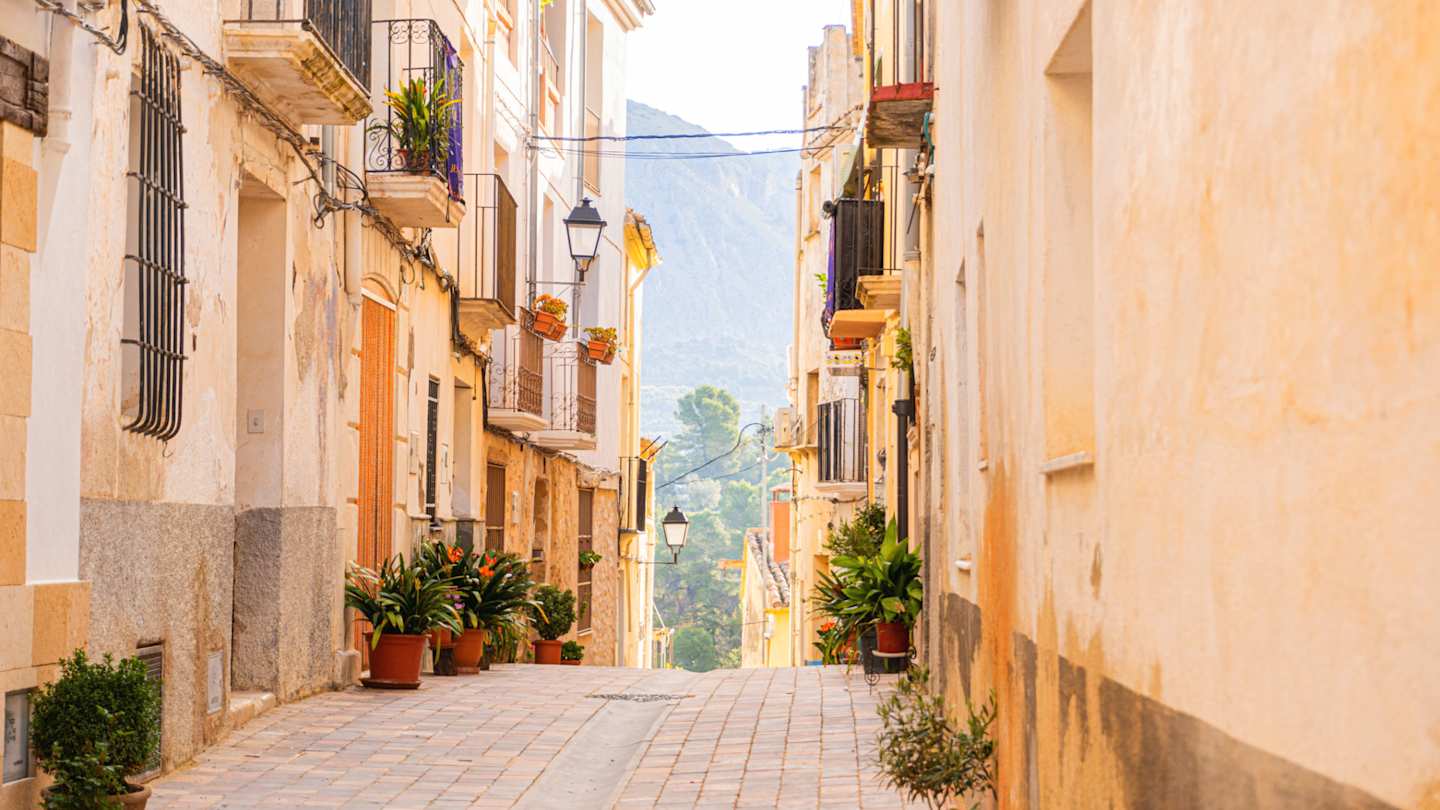
The province of Alicante is one of Spain’s most attractive destinations. Its crowning glory is the Costa Blanca, a 200-kilometre stretch of dazzling coastline dotted with vibrant cities and peaceful fishing villages. But head away from the coast and you’ll come across even more beauty, from rugged mountains to ancient towns. Thinking of a holiday here? Our travel experts at Plum Guide know the region well, and have all the information you need. Before you book those tickets, have a read of our travel guide to Alicante – it’s got all the most important information covered.
General info about Alicante
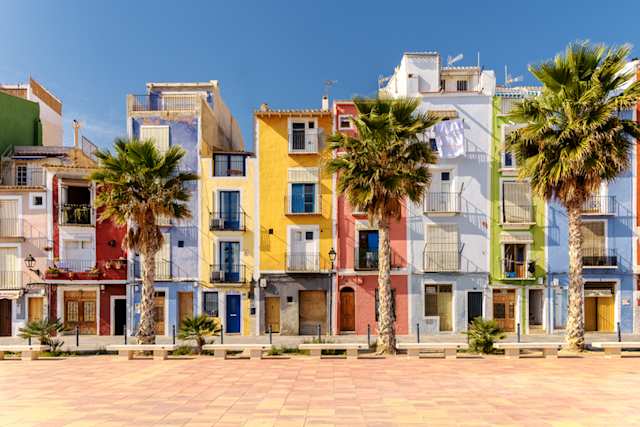
Colorful beach homes in Villajoyosa, a charming Mediterranean village in Alicante
Alicante has a rich and diverse history which dates back to prehistoric times. It wasn’t until the Roman era that the region really flourished, becoming an important centre for olive oil, wine and ceramic production. The Moors took control in the 8th century, leaving a significant influence on Alicante’s culture, architecture and agriculture. Fast forward to the end of the Spanish Civil War in 1939, Alicante has undergone significant growth throughout the past several decades, becoming the popular tourist destination it is today.
Best time to visit Alicante
With its Mediterranean climate, there’s no bad time to visit Alicante. If you’re looking for the best beach weather, visit between June and September (but bear in mind it gets very hot and crowded during peak season). If you want to avoid large crowds, the spring season between March and May is a great time to visit, with the weather still being pleasant enough to enjoy the beach. Autumn is also a good time to see Alicante, but expect sporadic rainfall.
How to get to Alicante
If you’re arriving by plane, your port of call is Alicante Airport ALC (also known as Alicante-Elche Airport). The airport has flights to over 100 different destinations, both international and domestic. You can also get to Alicante city by train, with connections to other cities in Spain like Madrid, Murcia and Cartagena. From Alicante city, you can also get a train to other towns on the Costa Blanca. If you plan to explore the whole coast, we suggest hiring a car – that way, you can make your own schedule and sightsee at your own pace.
Top activities and attractions
Beaches
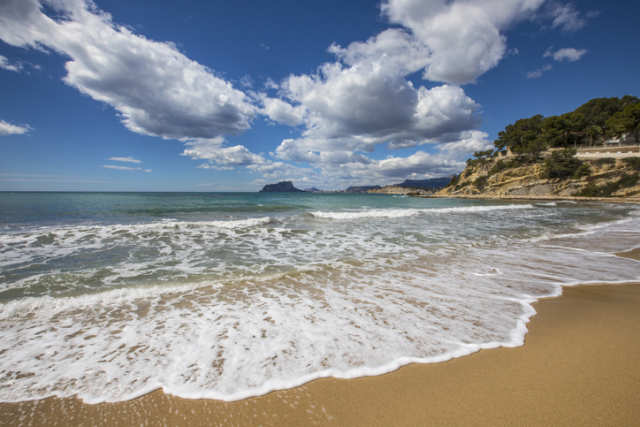
Waves crashing on golden sand in El Portet Beach, Alicante
The beaches along the Costa Blanca are incredibly beautiful, from amenity-packed stretches of sand to hidden bays and natural swimming pools. For family-friendly shores, some of our favourites include Playa del Portet in Moraira and Playa Arenal Bol in Calp. If you’re seeking something a little more secluded, Cala Baladrar in Benissa is a rustic little cove surrounded by pine trees and a high cliff. Want to swim au naturel? Cala Racó del Conill in Villajoyosa is a gorgeous nudist cove with crystal-clear waters.
Watersports
Aside from swimming, Costa Blanca offers plenty of opportunities for watersports. Up and down the coast you’ll find marinas and watersports centres offering lessons and equipment rental. Thrill-seekers can try activities like jet-skiing, flyboarding and windsurfing, while those who prefer something a little more relaxed can enjoy kayaking, paddleboarding and sailing. To explore beneath the waves, scuba diving and snorkelling are popular activities, with pretty corals and rich marine fauna like octopus and turtles.
Museums and galleries
Alicante has a fascinating history to discover, and you can learn more about it in the region’s wide range of museums and galleries. The Archaeological Museum of Alicante offers a glimpse into the ancient civilizations that once lived here, including the Iberians, Romans and Moors. Alicante is also a great place for art lovers, with the Museum of Contemporary Art and the Gravina Museum of Fine Arts. In Santa Pola, discover Alicante’s seafaring history in the Museo del Mar.
Hiking
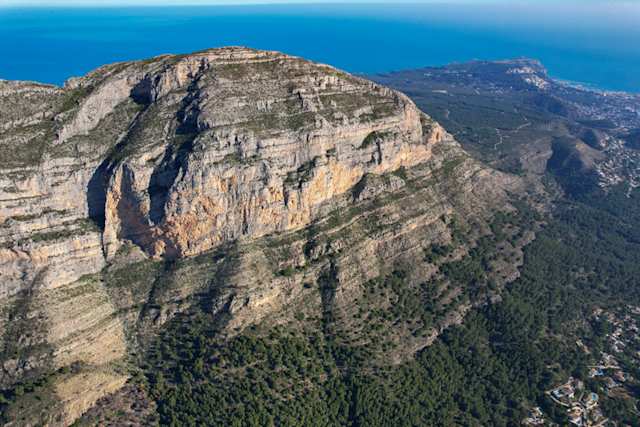
Aerial sunrise view of the Montgó Massif, with sea in the distance, Alicante
The region’s stunning natural surroundings are the best place to stretch your legs. The Montgó Natural Park is home to the majestic Montgó Massif, which rises 753 metres. There are various trails in the area which take you past ancient settlements, impressive cliffs and ravines. One of our favourite hiking trails in Alicante is the Barranco del Infierno, or Hell’s Gorge. Located in the town of Pinoso, the route leads you through a narrow gorge with soaring cliffs and a small waterfall. It’s slightly challenging but the views and the natural pools are worth it.
Historical attractions
Head to the town of Orihuela which has been declared a Historic Artistic Site thanks to its large number of monuments, museums and points of interest. Don’t miss Colegio Diocesano Santo Domingo, a former convent boasting extraordinary architecture. In the city of Elche, stroll through its historical centre to the Basilica of Santa Maria. Built on the ruins of a mosque, this magnificent cathedral with its two blue domes is one of Alicante’s most famous sights.
Hidden gems
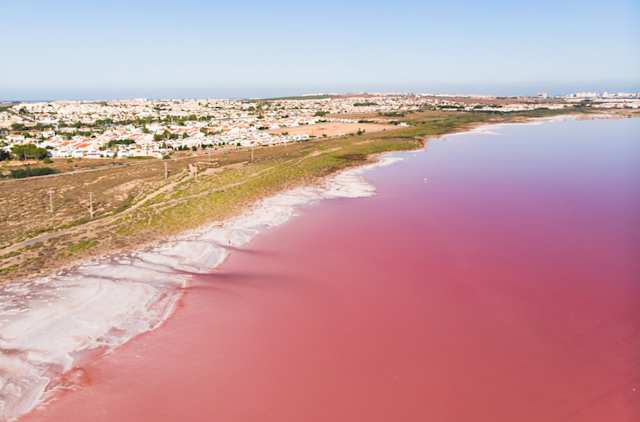
Wide view of the pink salt lagoon in Torrevieja, Alicante
You can't have a travel guide to Alicante without mentioning a few hidden gems. One of the region’s most spectacular natural wonders is Las Salinas de Torrevieja, a series of saltwater lagoons spread across 1,400 hectares. Stained pink from the microorganisms which live in the lagoon, you can even catch pink flamingos during the breeding season.
In search of a viewpoint without the crowds? Head to the Sierra de Orihuela mountains and hike up to the La Cruz de la Muela, a colossal iron cross on a hilltop. At about 465 metres above sea level, you’ll get far-reaching views of the surrounding towns and countryside.
Best areas to visit and stay in
Alicante
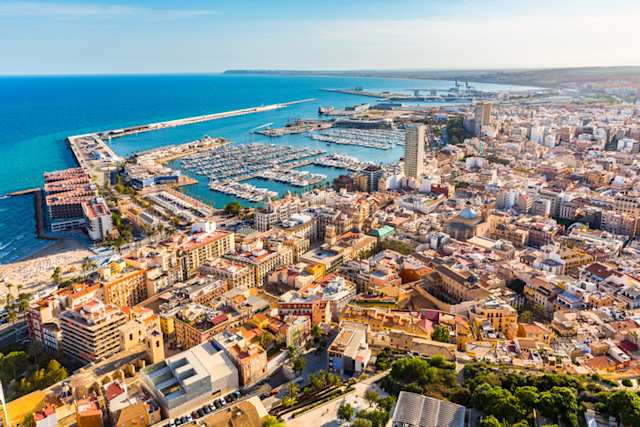
City panoramic of Alicante's seaside, harbour and houses, Costa Blanca
The capital of the province, Alicante city merges beaches with historical attractions. Playa del Postiguet's golden sands and blue waters make it a favourite for beach days. When you're not sunbathing, stroll through the colourful Old Town – make sure to stop by Mercado Central to stock up on goodies like Iberian ham, cheese and olives – or wander along La Explanada de Espana, the city's main promenade. You also can't miss Castillo de Santa Barbara, a Moorish castle perched atop Mount Benacantil. It's the perfect spot to watch the sun go down over the ocean.
Benidorm
For an action-packed holiday, Benidorm is the place to be. Two beaches suit everyone's needs – there's Playa de Levante if you want to be at the heart of the action, while Playa de Poniente offers a more laid-back experience. If you're travelling with young kids, keep them entertained with a day at Terra Mitica theme park or Aqualandia. Need a breath of fresh air? The nearby Sierra Helada Natural Park offers a handful of scenic hikes.
Calp
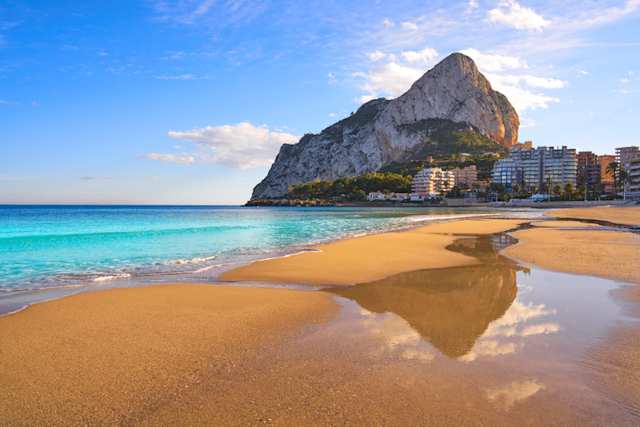
Playa de Fossa beach in Calpe, Alicante, Spain
This seaside resort is known for the Peñon de Ifach, a 332-metre limestone rock formation that towers over the town – make the challenging climb for remarkable views of the coast. Calp’s historic centre is home to cobbled streets lined with old churches, colourful buildings and historical attractions like the 13th-century Torreó de la Peça. Beach-wise, relax on Playa de la Fossa, a fine curve of sand with fantastic views of Peñon de Ifach. Just behind the beach is the Las Salinas wetland area, home to pink flamingos.
Dénia
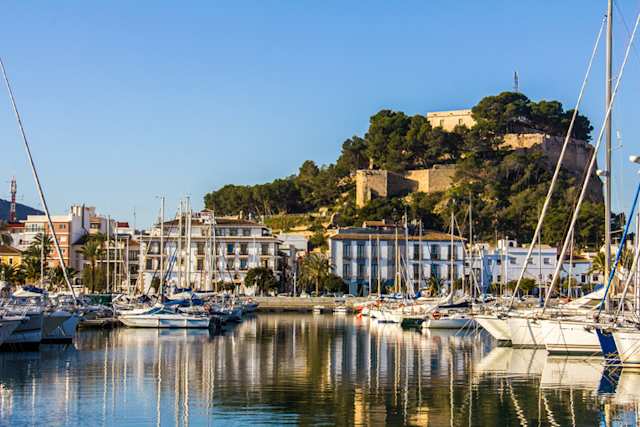
Boats in Dénia Port Marina, with Dénia Castle in the background, Alicante
The coastal town of Dénia is another great option. There are three main beaches here – Les Marines for swimming, Les Rotes for snorkelling and Els Molins if you want to escape the crowds. In town, winding streets lead to the Castillo de Dénia, a 10th-century Moorish castle which you can climb for epic panoramas. When you’ve worked up an appetite, pop into the various restaurants to try the local speciality – the Denia red prawn.
Jávea
Jávea, known as Xàbia in Valencian, is one of the most popular towns on the Costa Blanca. A perfect escape from the high-rise buildings of other resorts, this is the spot to be for idyllic scenery and laid-back living. The main beach is Playa del Arenal – the sandy shore and shallow waters make it especially suitable for families. Beachfront eateries and a buzzing town centre offer plenty to do when you're not in the mood for sunbathing. The Thursday market in Plaza de la Constitución is a great place to pick up clothing, leather goods, fresh produce, and a variety of local delicacies.
Eating out in Alicante
Food is an important part of any holiday, and we couldn’t leave it off our travel guide to Alicante. The food in Alicante makes the most of fresh seafood and locally grown produce, with a particular focus on rice dishes. Alicante also has a sweet tooth and you’ll find lots of delicious pastries and desserts.
Local delicacies
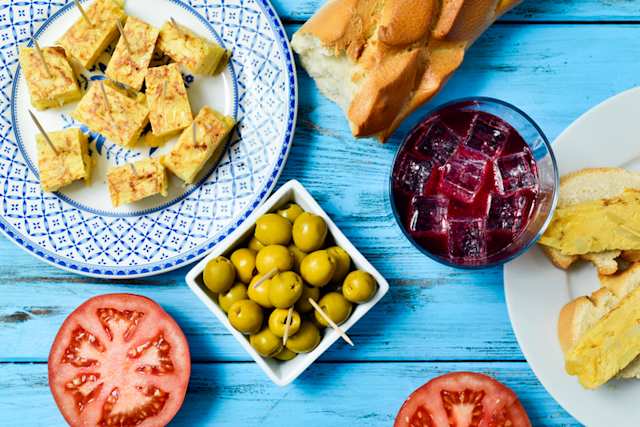
High-angle shot of a plate with tapas (bread, Spanish omelette and a bowl of olives) and a glass with Tinto de Verano (red wine and soda) on a blue wooden table
Local delicacies to make note of include arroz con costra (baked rice with a crust, topped with beaten egg), olleta (a stew with rice, chickpeas, chestnuts, pumpkin, stock, olive oil, garlic, and salt pork or bacon) and mojama de atún (fillets of salt-cured tuna). For those who love dessert, turrón de Jijona (a type of soft nougat made with almonds and honey) is as delicious as it sounds. You also can't go wrong with a glass of sangria or Tinto de Verano (red wine mixed with soda).
Where to find food
The good news is, there are a whole array of restaurants up and down the coast to choose from. You’ll come across plenty of eateries serving traditional dishes, as well as the ubiquitous tapas bars with small plates, allowing you to try a variety of local flavours at the same time. Celebrating a special occasion? Why not treat yourself to a meal at a Michelin-star restaurant? We particularly recommend BonAmb in Jávea, where seasonal dishes are served in a restored country house.
